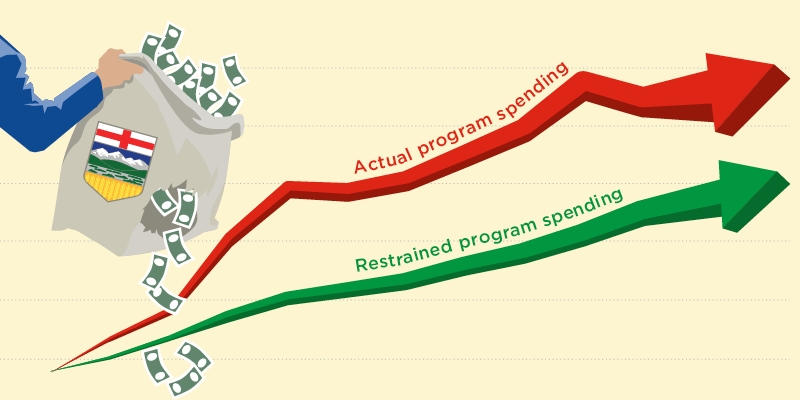Alberta's Budget Deficit: Why Spending is to Blame, 2017
— Published on January 26, 2017

Summary
- Alberta is projected to run a deficit of $10.8 billion in 2016/17. This will be the province’s 8th deficit in nine years. The province is expected to return to a net debt position this year for the first time since 2000/2001.
- While the sharp decline in oil prices since 2014 is often blamed for the province’s fiscal challenges, the evidence does not support this view. Instead, the primary reason for the deterioration of Alberta’s finances in recent years is rapid program spending growth.
- Between 2004/05 and 2015/16, program spending increased by an average rate of 7.1% per year while revenues increased at an average annual rate of 4.6%. During the same period, spending increased at nearly double the combined rate of inflation plus population growth.
- Had the government increased spending more modestly at the rate necessary to keep up with inflation plus population growth, the province would have run surpluses in every year examined, rather than 8 deficits in 9 years. The early evidence suggests the new government in Edmonton is repeating the mistakes of its predecessors.
- In its first full year in control of the budget, the new government is projected to increase program spending by 7.5% this year (or 5.4% excluding unplanned emergency spending associated with the wildfires in Fort McMurray).
If the government oversees more spending growth in the years ahead, it will exacerbate Alberta’s fiscal problems, contributing to further increases in debt and delaying a return to balanced budgets. A better course is to acknowledge the source of the problem—spending—and take corrective action.
Authors:
More from this study
Subscribe to the Fraser Institute
Get the latest news from the Fraser Institute on the latest research studies, news and events.




